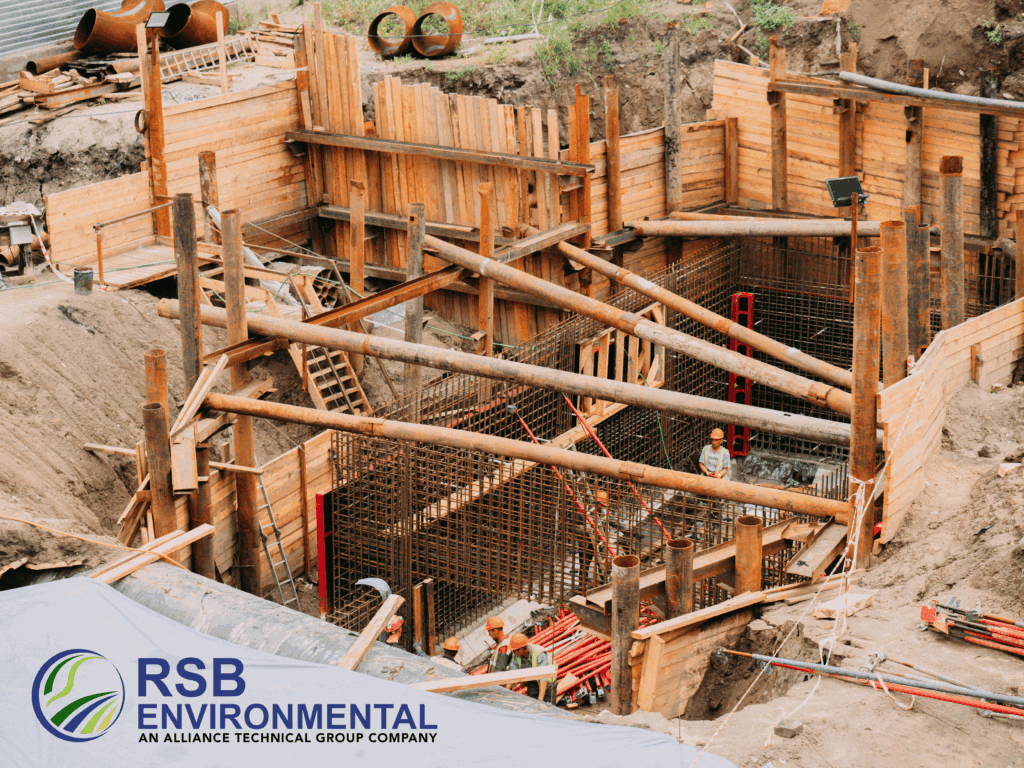Why Developers Should Combine Phase 1 and Phase 2 ESA
When planning a real estate development or land investment, conducting environmental due diligence is not just best practice, it’s essential. Developers and land investors face significant risks if environmental contamination is discovered too late in the project. These issues can derail construction schedules, inflate budgets, and even devalue properties.
To mitigate these risks, developers are increasingly opting to combine Phase 1 and Phase 2 Environmental Site Assessments (ESA) at the early stages of their projects. While these assessments have traditionally been viewed as separate components of the due diligence process, combining them offers several strategic advantages.
In this article, we explore why bundling Phase 1 and Phase 2 ESAs helps developers identify contamination risks early, streamline their projects, and avoid costly delays. We’ll also cover important regulatory compliance considerations and the importance of assessing hazards and substances that could pose health or financial risks.
Understanding the Basics: Phase 1 vs. Phase 2 ESA
A Phase I Environmental Site Assessment is a preliminary, non-intrusive evaluation of a property’s environmental history and current condition. It includes:
- Historical records and site plans review
- State and federal database searches for known contaminants and hazards
- Visual site inspection and photographic observations
- Interviews with property owners, occupants, and local officials
- Review of activities, materials, and nearby areas for potential impact
Its main goal is to determine the likelihood that the site contains substances of concern, known as Recognized Environmental Conditions (RECs).
If RECs are found, a Phase 2 Environmental Site Assessment is recommended. This investigation is more in-depth and typically includes:
- Collection of samples (soil, groundwater, building materials) at various depths
- Laboratory analysis for chemicals, asbestos, lead paint, and other hazardous components
- Comparison of findings against environmental standards and regulatory requirements
- A detailed report outlining the extent of contamination, if present
Phase 2 ESAs help confirm or refute the presence of environmental concerns and can inform mitigation, clean-up, or compliance strategies.
Why Combine Phase 1 and Phase 2 Environmental Site Assessments?
1. Accelerate the Due Diligence Timeline
Combining both assessments early allows developers to maintain project momentum. If a Phase 1 ESA indicates a concern, having a Phase 2 already scheduled ensures work isn’t stalled by delays in engaging additional services or receiving permits in accordance with local laws.
This streamlined order of operations supports navigation through the pre-construction phase more efficiently.
2. Avoid Unplanned Costs and Delays
Unexpected discoveries of contaminants, leaking storage tanks, or regulated species can significantly impact timelines and budgets. Addressing these considerations upfront with a combined assessment allows developers to better allocate resources and reduce liability.
In several cases, late-stage discovery of hazards has resulted in halted projects and financial losses that could have been avoided with early investigation.
3. Improve Investor and Lender Confidence
Comprehensive site inspection reports that include both Phase 1 and Phase 2 findings give financial parties—such as lenders and joint venture operators—confidence in the project’s environmental soundness. This can affect decisions on financing terms, insurance coverage, and long-term investment viability.
4. Enable Smarter Remediation Planning
Early detection of asbestos, chemicals, or other pollutants gives developers more time to plan and budget for mitigation. This often results in more affordable clean-up solutions that meet guidelines while minimizing disruption to construction.
Combining assessments also helps ensure actions taken are in full compliance with regulatory expectations.
5. Strengthen Property Value and Marketability
Properties with a clean environmental report that meet standards are more appealing to future users, buyers, and stakeholders. A thorough assessment enhances transparency and allows for smooth transitions during purchase or leasing negotiations.
It also supports comparison of potential sites to choose the one with the least environmental risk and greatest long-term value.
Who Should Consider Combined ESAs?
Bundled Phase 1 and Phase 2 assessments are ideal for:
- Developers of properties near wetlands, industrial zones, or historical operations involving hazardous materials
- Buyers acquiring older structures with potential for mold, lead paint, or asbestos
- Projects situated in environmentally sensitive areas
- Commercial acquisitions involving large-scale storage tanks or manufacturing activities
If any red flags appear during a preliminary review, bundling both assessments is often the most prudent course of action.
FAQs About Phase 1 and Phase 2 Environmental Site Assessments
-
Do I always need both Phase I and Phase 2 ESAs?
Not always. Phase 2 is only triggered if Phase 1 identifies RECs. However, planning for both improves compliance, reduces risk, and allows faster response to potential hazards.
-
How long does the combined ESA process take?
Typically, between 3 to 6 weeks. The duration depends on site complexity, required samples, and lab turnaround times.
-
Can I skip Phase I and go straight to Phase 2?
No. Phase I provides critical information that informs the scope and focus of Phase 2. Skipping this step may violate standards and expose you to legal and financial liability.
-
Will this increase my upfront costs?
Slightly, but combining assessments results in long-term savings by preventing delays, streamlining decisions, and minimizing cleanup costs.
-
Who typically pays for these assessments?
Typically, the user or buyer during due diligence. However, cost-sharing with property owners or sellers can sometimes be negotiated depending on the purchase agreement.
Partner With RSB Environmental for Complete ESA Solutions
At RSB Environmental, we specialize in providing comprehensive Phase 1 and Phase 2 Environmental Site Assessments tailored for real estate developers and land investors. Our team is trained to identify potential hazards, collect accurate samples, and deliver detailed reports in accordance with industry standards.
From site inspection to regulatory compliance, our services are designed to reduce your liability, improve project outcomes, and protect your long-term investments.
Contact RSB Environmental today at info@rsbenv.com for a free consultation.




